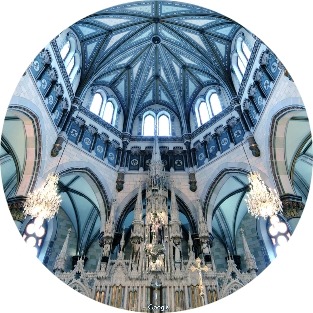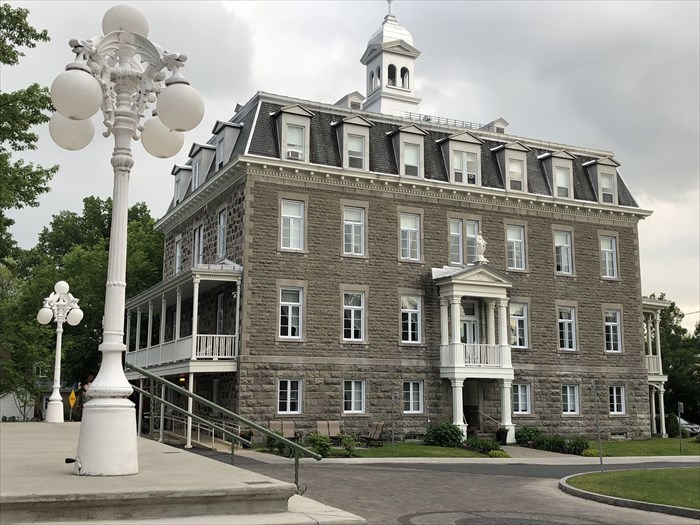
You stand on Place de l’église, gazing at the river and the Boucherville islands just across the way, and you think he must have had the same view back then. Who must have? None other than Pierre Boucher, founder of Boucherville in 1667 (like Boucher… and town). It was he who donated this land, on which three churches would be built in succession, in 1670, 1712 and this one, Sainte-Famille, dating from 1801.
Slowly turn around to admire the remarkable preservation of this stone heritage jewel, the former convent dating from 1890 and the old presbytery built in 1896, and you can let yourself be transported back in time and imagine yourself in the same place over two centuries ago.
Failing that, it’s easy to fall under the spell of the artists who perform on summer evenings as the sun sets!
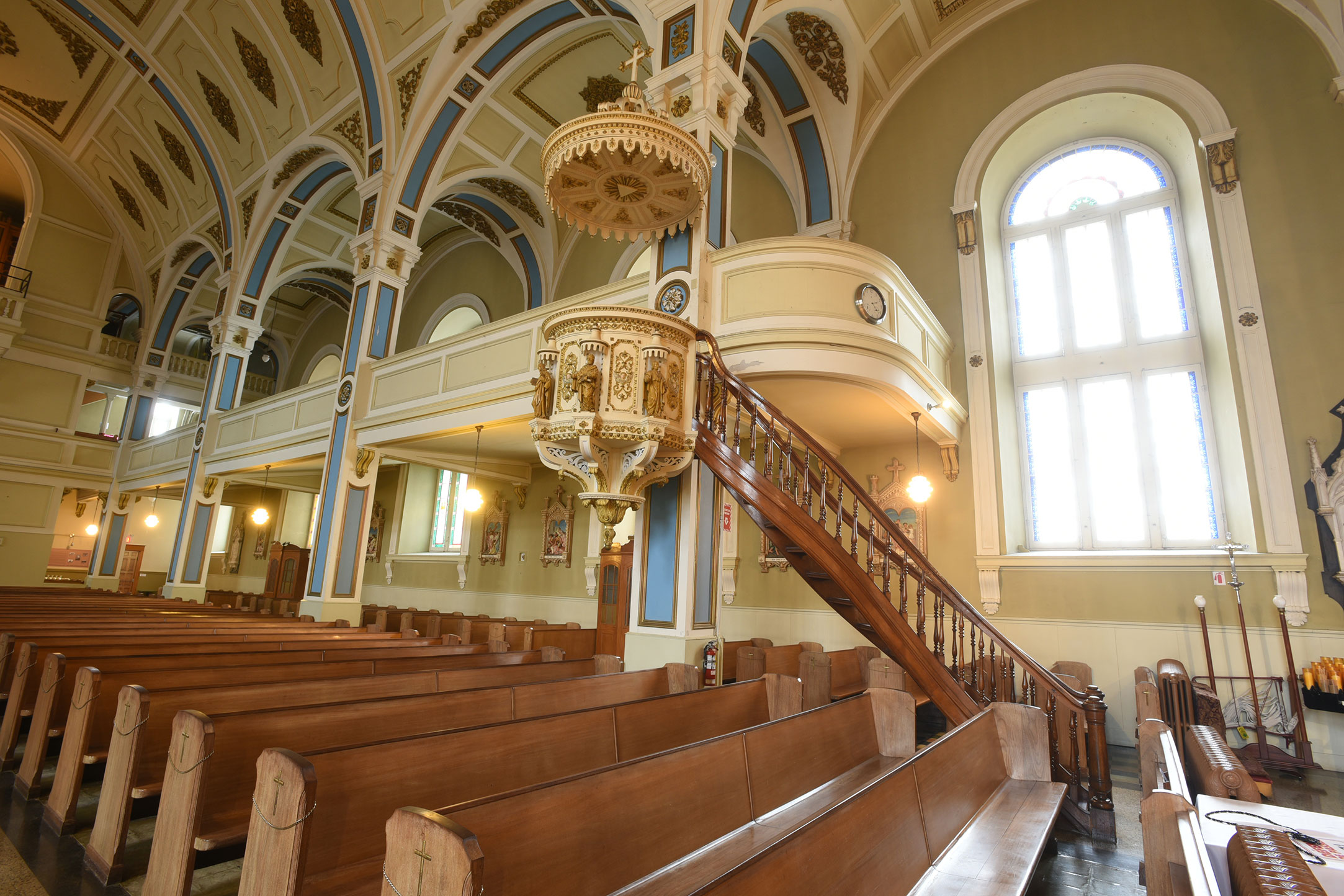
As well as admiring the priest’s sermons at the time, believers attending mass at La Nativité church could also admire the remarkable preaching pulpit on which he stood. This imposing raised structure, along with its canopy, staircase and statues, is made of carved wood – a meticulous feat of craftsmanship that makes this 1865 work of art priceless today.
Today, we can imagine God’s representative standing on his platform, spreading the gospel messages to an attentive audience. Never having had to say “Let go of the text messages, I’m talking!”
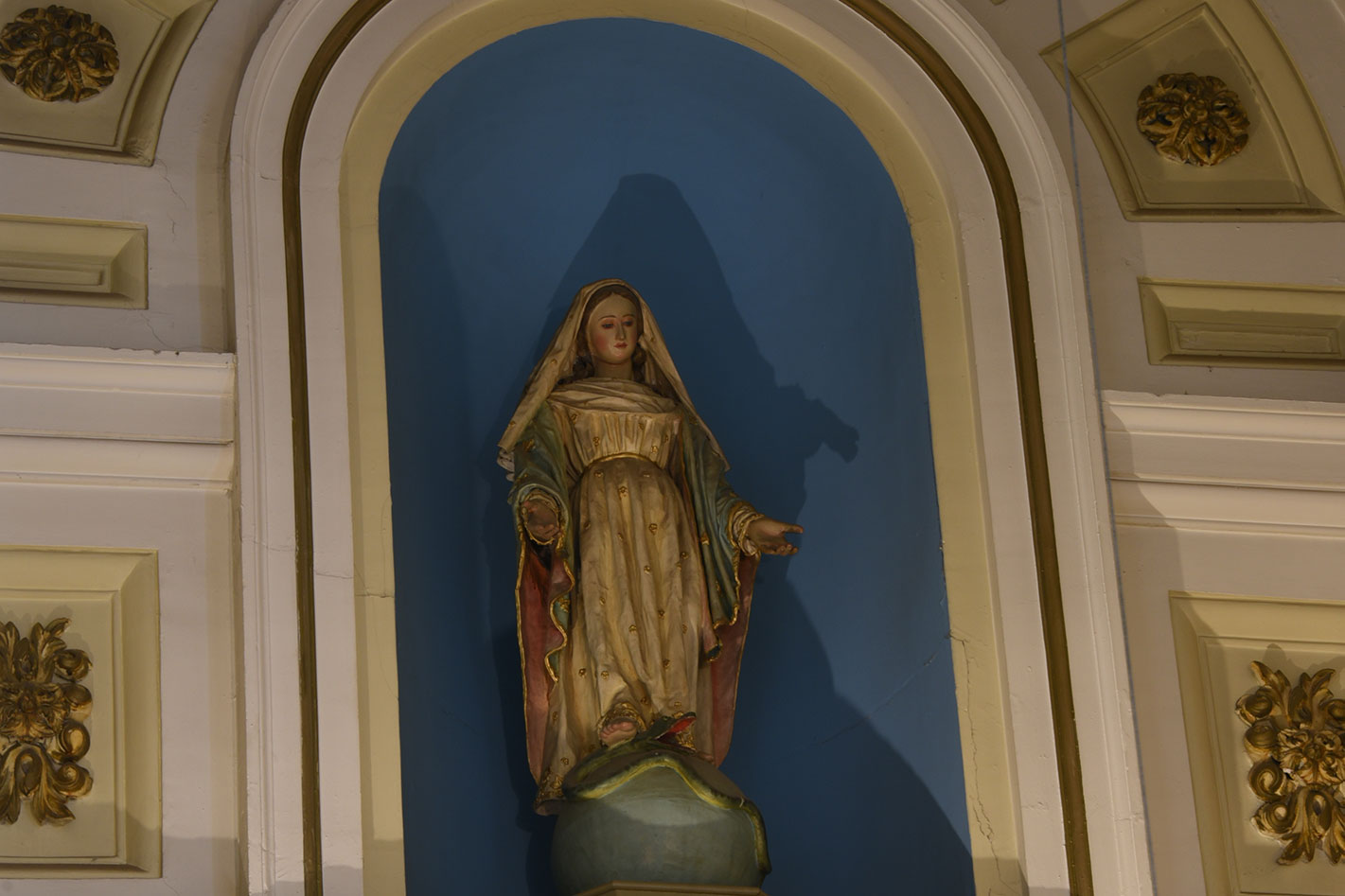
The year: 1867. While in Canada, people were busy creating… Canada, in Montreal, at the studio of artist Tomasso Carli, they were busy creating the many superb plaster statues that today adorn the choir and side altars of La Nativité church.
Interestingly, much like fund-raising today, these statues were made possible by generous donors. Their names, engraved on the various works, can still be seen more than 150 years later.
Another interesting fact: the statue of Mary above that of St. Joseph, at the very top, is made of papier-mâché and weighs just 10 pounds (about 4 kilos). The impressive result suggests that this was not a gift from a kindergarten…
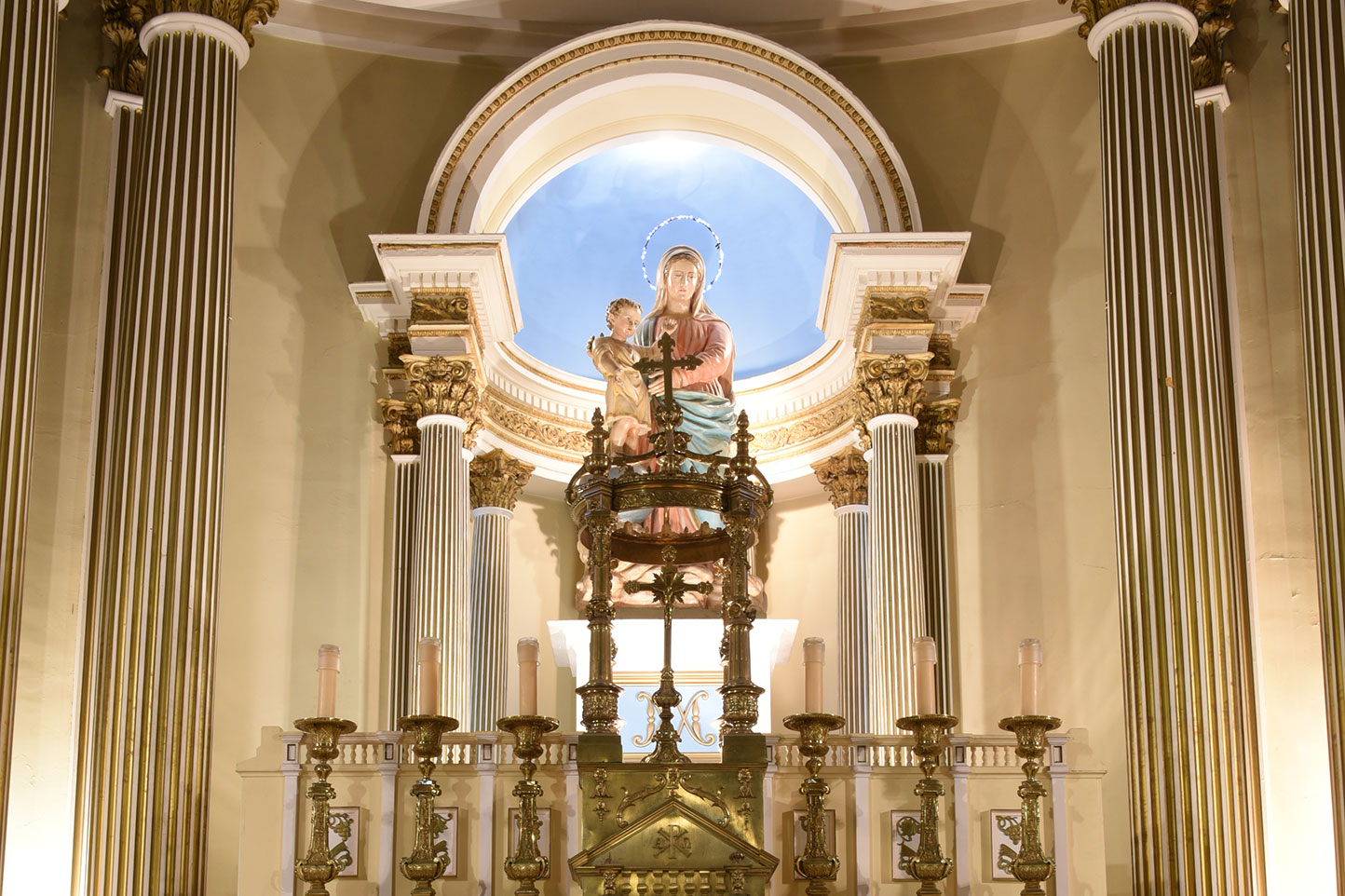
It’s solid. Made of bronze. Dates from 1870. And it’s the only one of its kind in Quebec. We’re talking here about the high altar (not to be confused with maîtres d’hôtel, which are generally younger and less bronze) at the front of La Nativité church.
Clearly, this impressive piece of permanent furniture was not easy to install.
Imported from Paris and installed in 1872, the high altar required a brick structure to support its heavy bronze casing. Also, the components of the piece required such precision in their installation, that a renowned Montreal silversmith of the time, Robert Hendery, had to be called in.
A man who, one imagines, could assemble an IKEA piece of furniture with his eyes closed today…
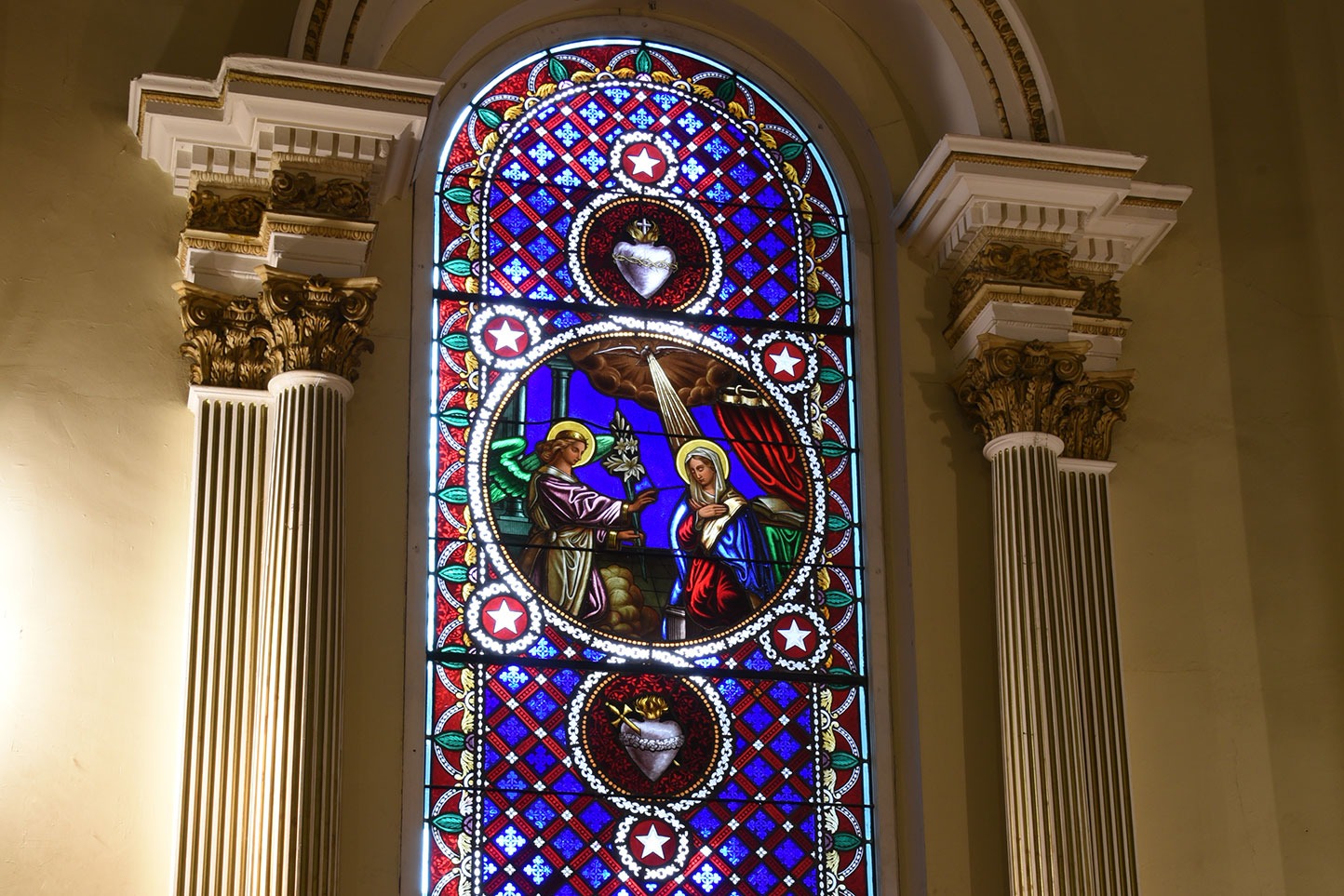
As you enter La Nativité church, you see two magnificent stained-glass windows. But even more astonishing than their impressive beauty, age and remarkable preservation, is the original cost of making and installing them. Wait for the punch: $400. For both.
Now, yes, you could say that’s in 1865 dollars. But even allowing for inflation, can we imagine today the creation of such masterful works, with all the expertise, meticulousness, manpower and time it takes, for the total sum of just… $7,500 in 2023? Considering the challenges and technical limitations of the time, it seems that miracles were made elsewhere than in the Bible…
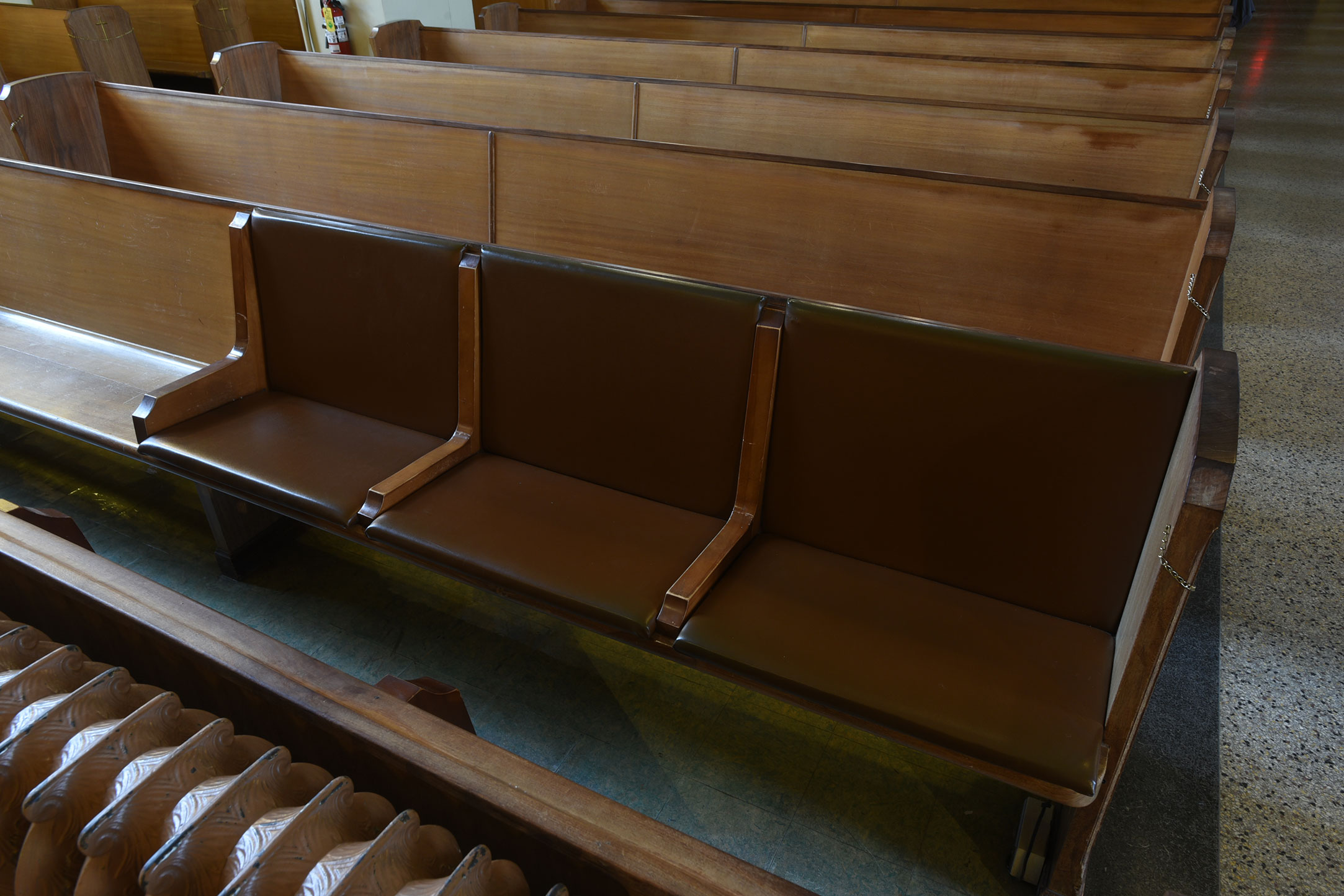
In church, a pew is just a pew, right? Well, not always. It can demonstrate a special status. Take the one in front, to the right of the central aisle in the nave of La Nativité church. Certainly better suited to long religious ceremonies, since it’s upholstered. But why? Because it was reserved for the exclusive use of marguilliers, the members of a parish’s factory council.
Hence its name: banc d’œuvre de la fabrique. Which certainly sounds more impressive than “bench upholstered front right”. Incidentally, the marguilliers ceased to exercise their posterior privilege almost 50 years ago. Has the bench since been occupied on a first-come, first-served basis?
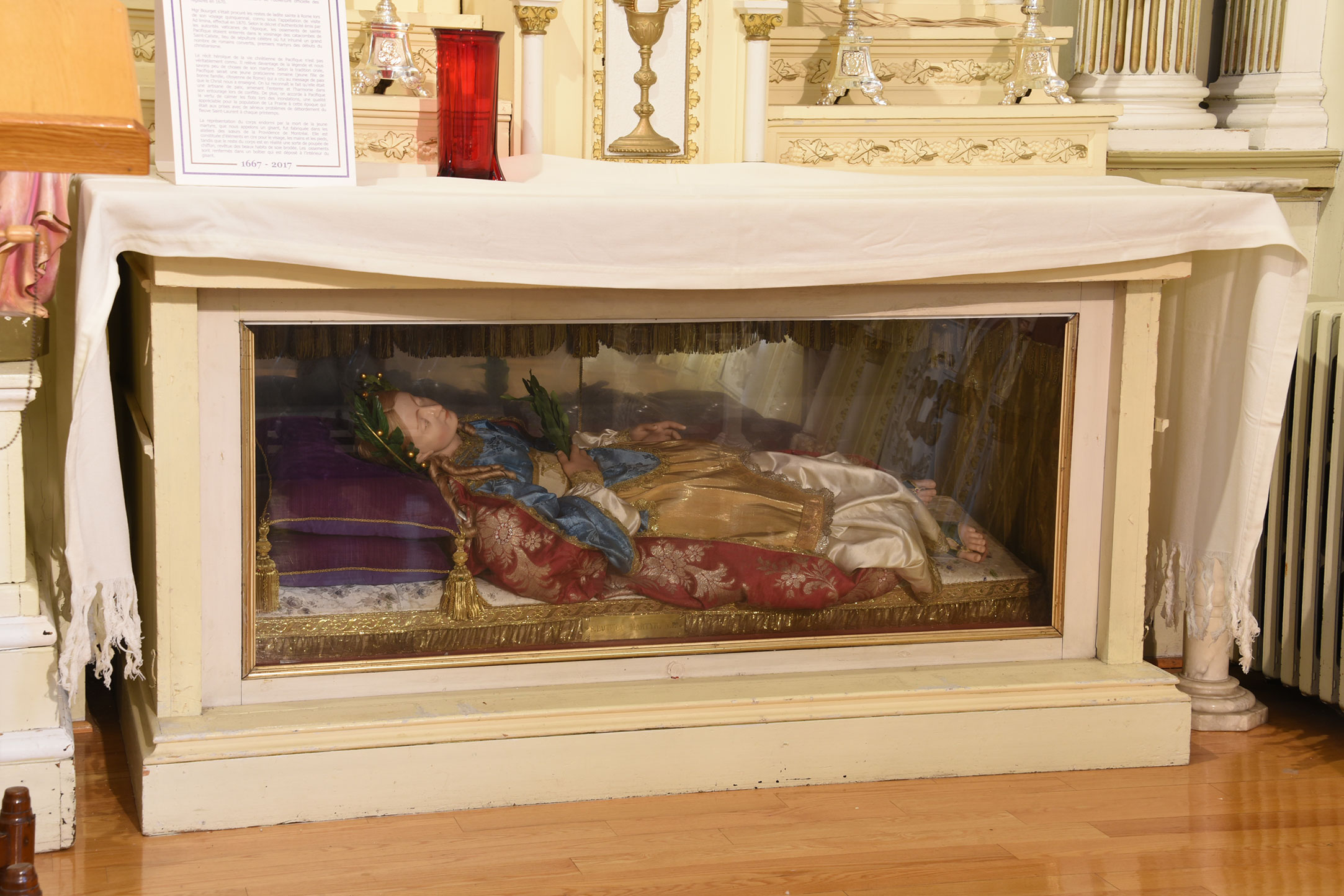
Who was Saint Pacific, and how did her bones end up in the Church of the Nativity? In all likelihood, her name was no accident. History has it that this young Roman practitioner had the gift not only of calming conflict, but also of calming… floods. A talent, let’s face it, that comes in very handy in a place like Laprairie, which has to contend with major overflows of the St. Lawrence River every spring.
It was Monseigneur Bourget who brought his remains back from Rome in 1870. They now stand beside a life-size recumbent statue of Sainte Pacifique at her eternal rest. We can admire it and say to ourselves that this woman, who embodied peace, rests in her turn… in peace.
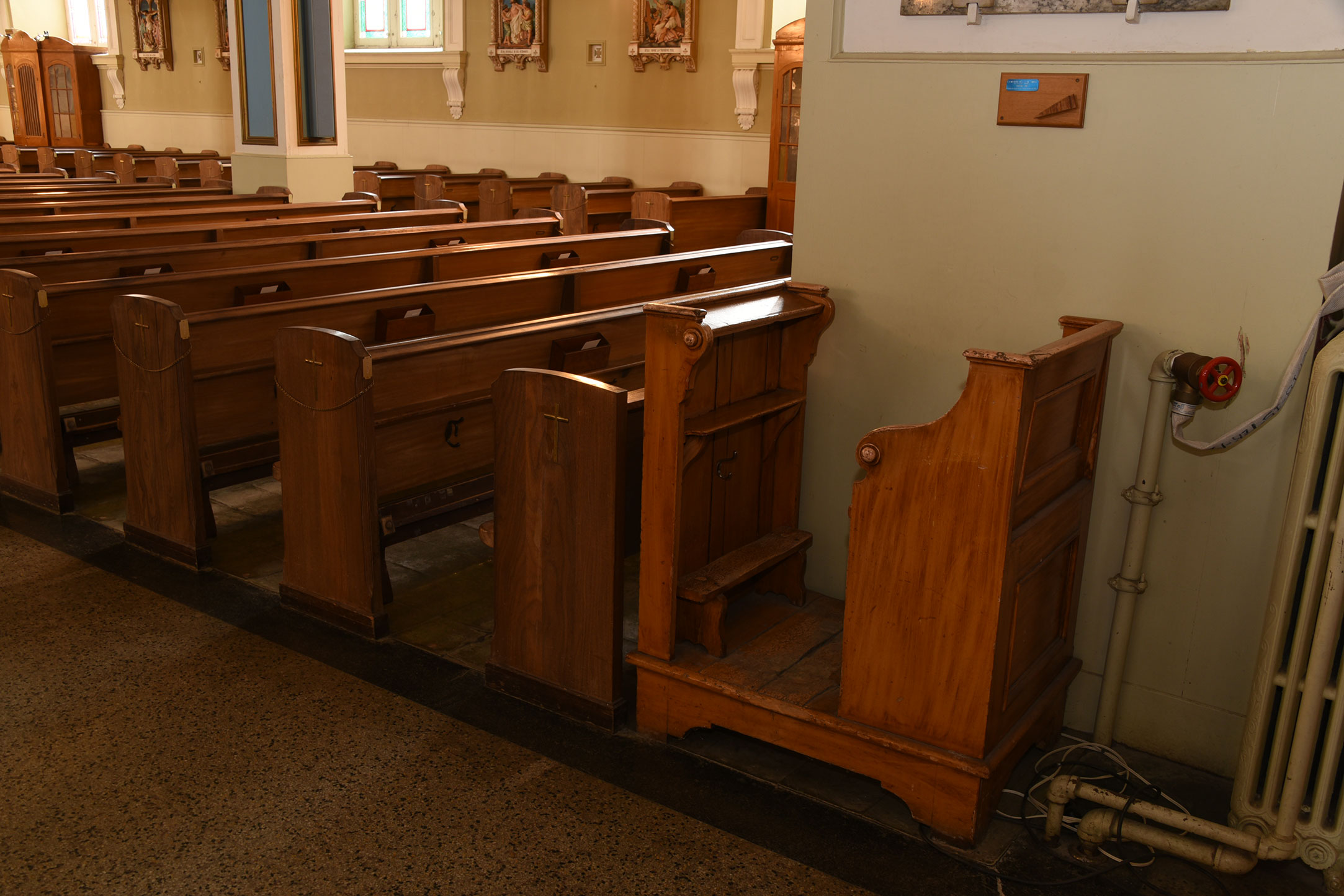
Did you know that back in the day, the church had its own peace officer? This cross between a policeman and a security guard was called a constable. And he had his own pew at the back of the church. The pew was elevated, allowing the connétable to keep an eye on the people present and intervene in case of bad behavior (like snoring during the sermon?) This pew, which dates from 1865-66, is still there today.
Another of the constable’s responsibilities? Dogs. Specifically, he had to make sure that none of these beasts entered the church. And not just for fear of them relieving themselves. Apparently, such a distraction was a harbinger of misfortune in the village… Does this explain why so many common expressions refer to dogs in a negative way, such as “un temps de chien” or “c’est vraiment chien”?
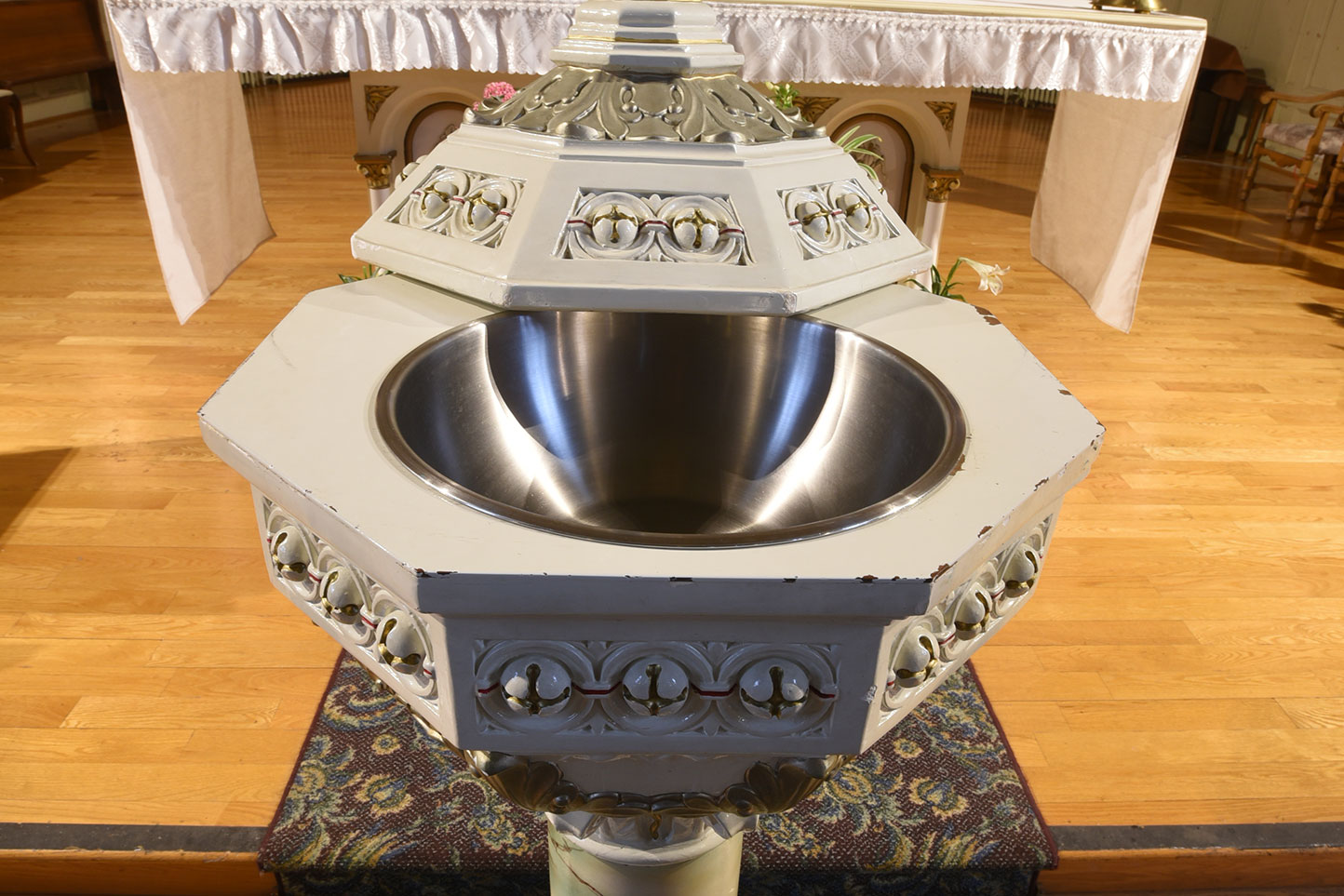
Today, as we know, during a baptism, the basin, known as the baptismal font, is placed at the front during the ceremony, then emptied and put away. But in the past, here at La Nativité church, the font was fixed in place and could not be moved. Why was this? Because a pipe was connected to it to drain the water… directly into the ground. A bit like a washbasin, but without the sewage.
Dating from the 1920s, these fountains have since been restored and made removable. Which is rather practical, since at the time, they were located in the sacristy. Less easy to take photos with the family…
